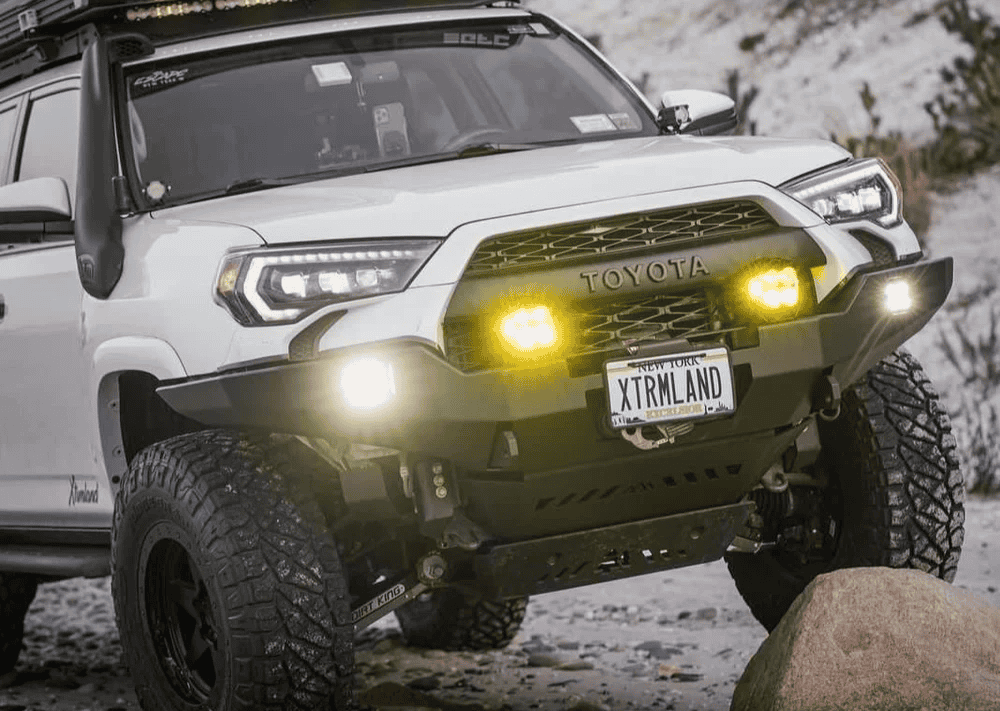Overland Vehicles

A multi month expedition vehicle is a rolling basecamp designed to sustain people and gear far from services for weeks at a time. It blends high payload, dependable driveline, efficient living systems, and easy field serviceability. Unlike a weekend camper, it must tolerate long stretches of corrugations, extreme temperature swings, and repeated load cycles without fatigue. The interior layout supports daily routines like cooking, sleeping, and work while keeping heavy items low and centered to protect handling. Everything revolves around range, redundancy, and the ability to repair the basics with simple tools.
The platform matters. Choose a chassis with adequate gross vehicle weight rating and axle ratings so your target curb weight plus consumables, passengers, gear, and upgrades stays within spec. Recovery points must be rated and tied to the frame. Tires should be light truck construction with load rating that matches the axle limits, and overall diameter chosen with gearing and brake performance in mind. All wheel drive or part time four wheel drive offers traction, while a true low range gearbox helps control on steep grades with heavy mass.
Payload management is a safety system. Weigh the vehicle before and after upfit, verify front and rear axle splits, and avoid tail heavy bias. Secure every storage module. Keep fuel, water, and tools close to the floor and near the centerline. Suspension upgrades should focus on matched spring rate and damping, not just ride height, so the vehicle stays composed when fully packed and when tanks are empty.
Long duration travel runs on energy, water, and climate control. A reliable power system often combines lithium batteries in the 5 to 10 kilowatt hour range, solar in the 400 to 1200 watt band, and a DC to DC charger for alternator replenishment. In mixed weather, alternator charging becomes the backbone, so cable routing, fusing, and heat management must be tidy and serviceable. Battery chemistry with integrated low temperature protection and proper ventilation keeps the system safe during cold starts and charging in heat.
Water planning sets the cadence of resupply. Many travelers carry 25 to 50 gallons split across multiple tanks for redundancy, with food grade hoses, sediment pre filters, and a final drinking filter. A separate grey tank prevents contamination at camp. Hot water from an on demand heat exchanger or electric unit adds comfort, but it must be sized with battery capacity or engine run time in mind. Hygiene solutions can be simple, as long as they are fast to deploy in poor weather and easy to stow wet.
Climate control is about both heating and cooling the living space and the people in it. High efficiency ventilation with two roof fans enables crossflow and reduces condensation. Insulation strategy should address thermal bridging at pillars, window coverings, and door seals. In cold conditions, a small diesel air heater in the two to five kilowatt class can manage a well sealed cabin. In hot, humid zones, strategic shade, reflective covers, and smart parking angles help just as much as active cooling.
Plan daily watt hour use for refrigeration, fans, lights, device charging, and work equipment. Add a buffer for poor solar days and travel delays. Size cables for sustained current, protect all runs with fuses near the source, and keep high draw devices on short, direct paths. A battery monitor with shunt helps you verify actual use against assumptions.
Match tank size to your crew’s daily liters per person, including cooking and dishwash. Use quick disconnects and labeled valves so you can isolate a tank if needed. Refrigerators in the 65 to 110 liter class balance storage with power draw. Pack meals that tolerate heat and dust and store them in lidded bins that can be cleaned quickly.
Use layered navigation with offline maps, paper backups, and a satellite communicator for check ins and emergency messages. A first aid kit matched to your itinerary, traction boards, a rated jack, and a winch sized at least one and a half times gross mass round out the essentials. Practice recovery with your actual kit before you need it.
Once the plan is clear, turn the checklist into a build that drives well fully loaded, not just on paper. That means integrated storage that protects center of gravity, wiring that is neat and documented, and serviceable components you can reach without dismantling a room. If you want a team that designs for real miles, review the options on Explore our Overland Rigs. You will see how range, payload, and daily livability come together.
If your platform is already in the driveway and you need professional integration of power, water, storage, racks, lighting, or communications, see Custom Overland Upfit options. The right pairing of lithium storage, solar, and alternator charging keeps food cold and devices charged without constant idling. Thoughtful plumbing and venting keeps the cabin dry and quiet.
Trust matters when your route spans months. Learn how the team approaches design, fabrication, and handoff at Why Choose OZK Customs. We build and deliver from Fayetteville, Arkansas, with a handoff process that prepares you for the first miles and the ones that come after.
Your itinerary, crew size, and terrain shape the right solution. Share your goals, target weights, and energy needs, and we will translate them into a clear plan with parts that can be serviced anywhere. When you are ready to turn ideas into a capable multi month expedition vehicle, reach out and let us map the path from concept to keys.
Ready to turn your expedition checklist into a proven build plan? Tap our Overland team for a design consult. We map your route needs, calculate real world loads, and integrate power, water, and storage with field tested components. Submit the form to start your custom plan and secure a build slot at OZK Customs in Fayetteville, Arkansas.
ADDRESS:
6159 E Huntsville Rd, Fayetteville, AR 72701
PHONE:
(479) 326-9200
EMAIL:
info@ozkvans.com